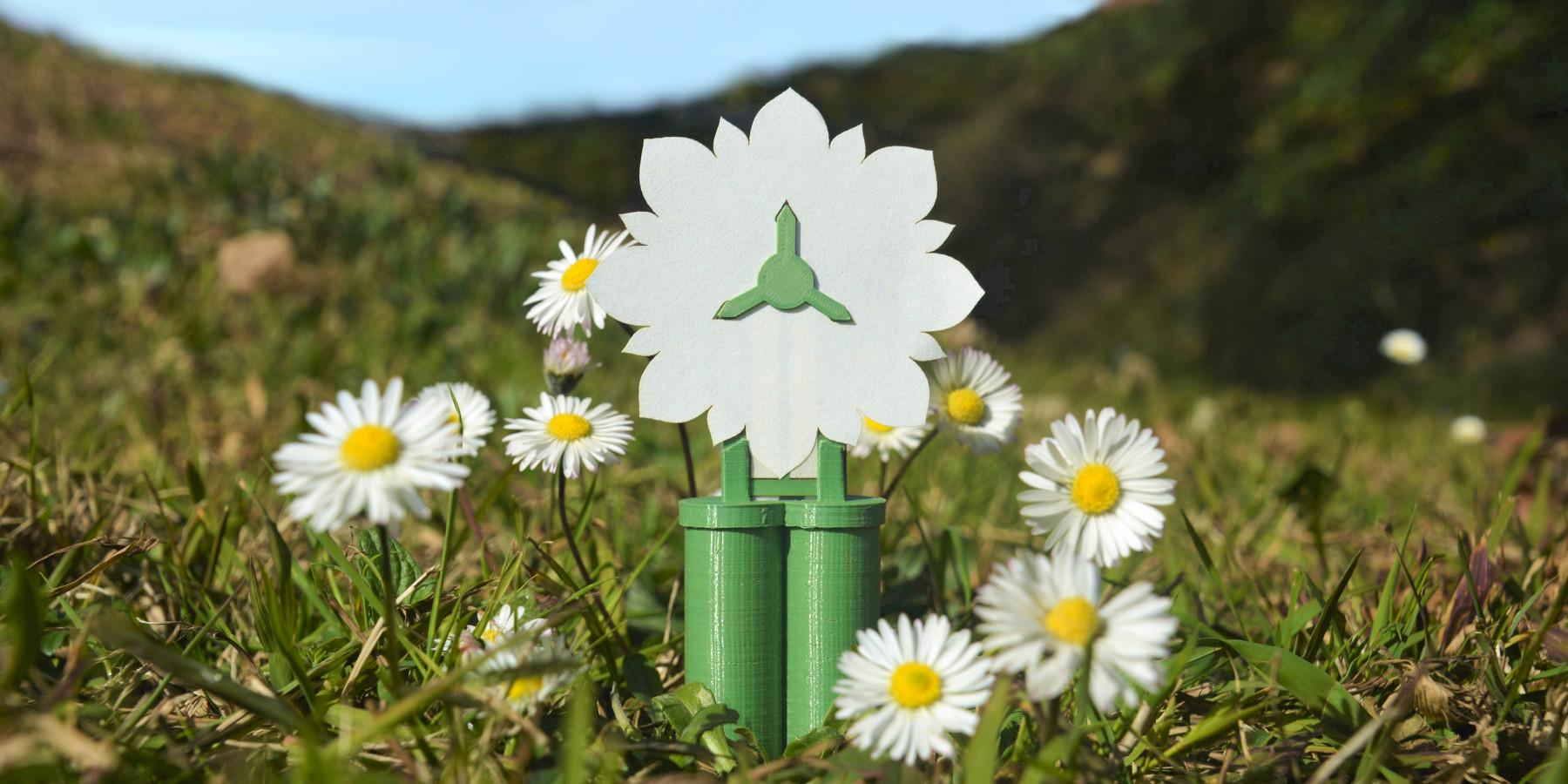A battery mimics the life cycle of a plant to generate electrical energy
A CSIC and BCMaterials team leads the development of a nature-inspired battery that can be biodegraded at the end of its lifetime following the natural cycle of a plant. The work proporses a new paradigm of sustainable batteries that follow the lifecycle of the devices they power.

A battery with roots, stem and leaves that, through its fluid system, is capable of mimicking the lifecycle of a plant and generate energy. This is how the new flower-shaped paper-based biodegradable battery created at the Institute of Microelectronics of Barcelona (IMB-CNM), from the Spanish National Research Council (CSIC), works. The results are now published in Energy & Environmental Science.
Nature is the source of inspiration for this device, eco-designed to meet the necessities of precision agriculture (PA) and a world that needs greater food production that is, in turn, more sustainable. The battery (baptized as FlowER Battery, short for Evaporation Flow Redox Battery) follows the transpiration principle of a plant and it moves the reactants through its microfluidic structure until expelled by evaporation. The energy is produced by the electrochemical reaction generated by the redox species in a pair of porous carbon electrodes.
"This battery represents a new milestone in our line of research, which proposes a new paradigm of batteries that follow the lifecycle of the devices they power. In this case, we have adapted to a biodegradable or compostable end-of-life, very suitable for agriculture or forest environments", explains main author Juan Pablo Esquivel, currently IKERBASQUE researcher at BCMaterials and at IMB-CNM-CSIC at the beginning of the project.
Current conventional batteries used for powering precision agriculture devices must be retired from the field for proper recycling, otherwise they it generate a serious impact on the environment.
The FlowER Battery is capable of producing enough energy to power wireles commercial sensors that can report parameters related to the needs of the field, such as light, soil humidity or temperature.
"We have prioritized sustainability during the development to create a disruptive technology within the ecological boundaries of the planet and capable of giving a solution to the energy needs of electronic devices", says Marina Navarro, from the IMB-CNM and first author of the paper. "The battery is based on paper and non-toxic materials. Plus, with the composting group of the Autonomous University of Barcelona (GICOM) we have appraised its biodegradability and non-toxicity following international standards", underlines.
The results are part of the BIDEKO project, financed by the State Research Agency (Ministry of Science and Innovation) and the European Union with Next Generation EU funds. Coordinated by the CSIC spin-off Fuelium and with the participation of research centers IMB-CNM-CSIC, the Basque Center for Materials, Applications and Nanostructures (BCMaterials), the Institute of Environmental Science and Technology (ICTA-UAB), the Center for Ecological Research and Forest Applications (CREAF), the Composting Research Group of the Autonomous University of Barcelona (UAB), the GAIKER technology center and the multinational ArcelorMittal.
Marina Navarro-Segarra, Carles Tortosa, Carlos Ruiz-Díez, Denis Desmaële Teresa Gea, Raquel Barrena, Neus Sabaté and Juan Pablo Esquivel. A plant-like battery: a biodegradable power source ecodesigned for precision agricultura. Energy & Environmental Science. DOI: 10.1039/D2EE00597B




